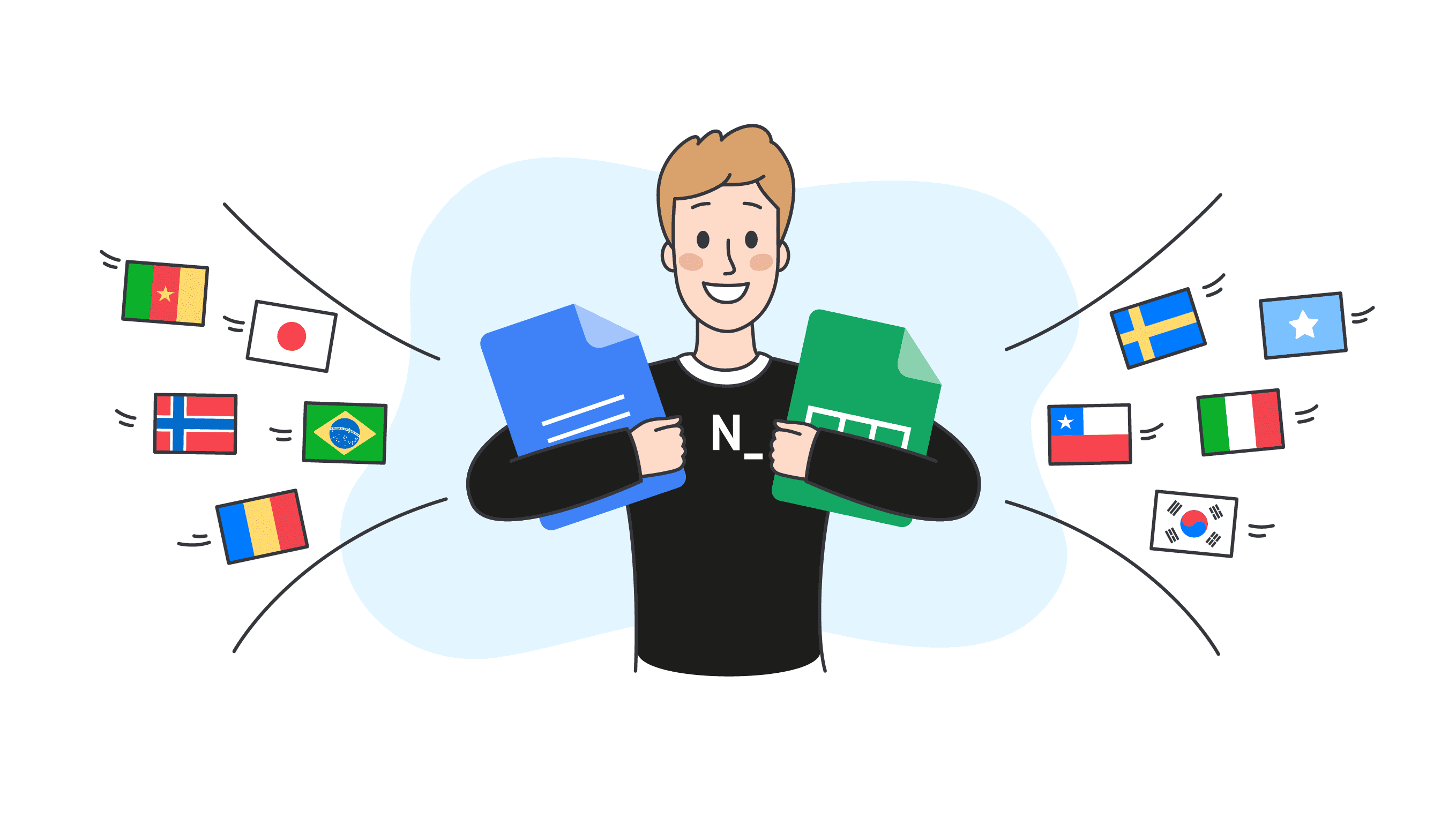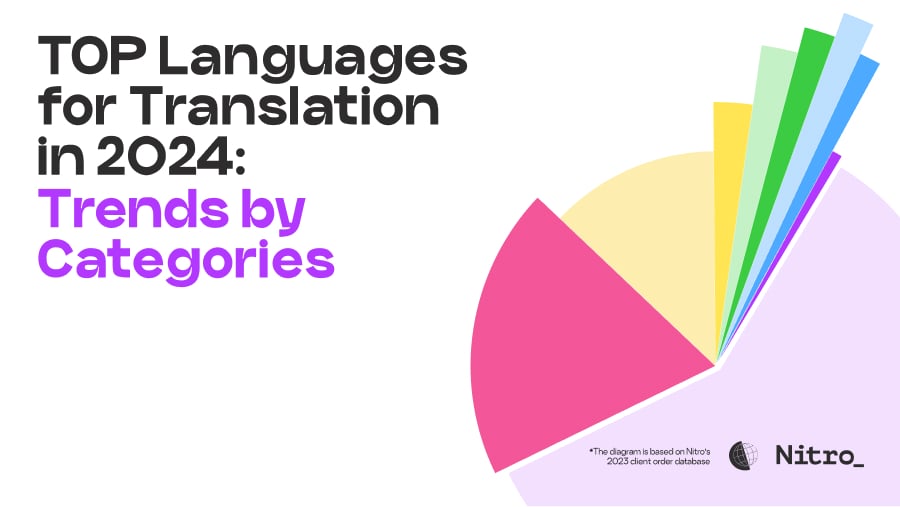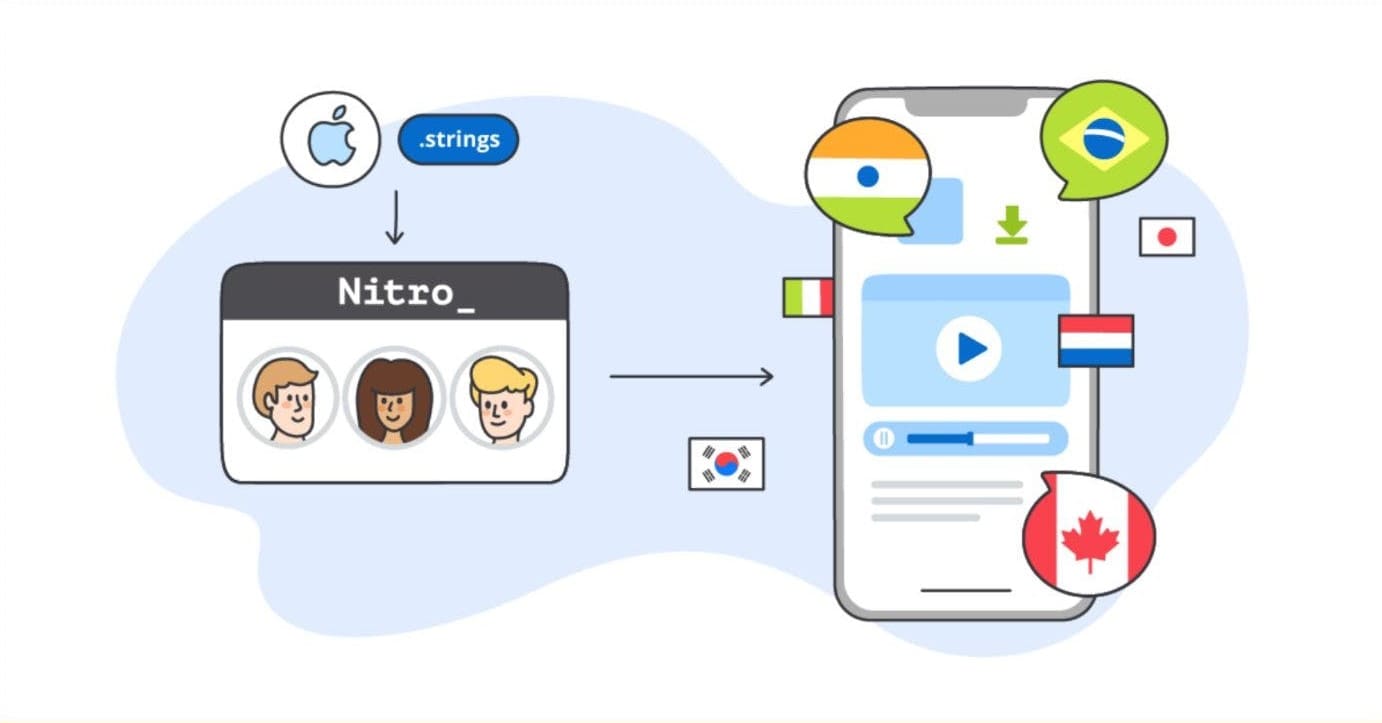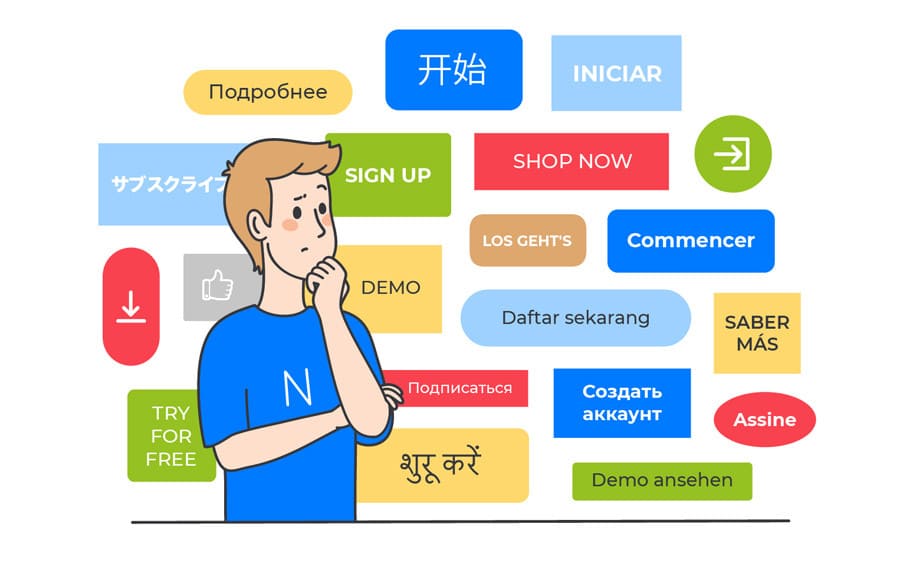Do you work with a global audience and frequently need to translate articles and press releases, email sequences, product updates, and presentations into other languages? Companies frequently use Google Docs and Sheets to translate and store content, but it can be challenging to translate them quickly and efficiently as the deadline approaches and other tasks pile up.
In today’s agile tech world, everything needs to be done fast, and translations are no exception. The flow and quality of translations is also important as this helps to build trust and reliability. In this article, we’ll discuss how to balance the cost, quality, and time spent and which options are best for product and marketing translation.
At Alconost, we focus on the cutting edge of localization technologies and are always looking for ways to optimize and automate routine processes. Drawing on our 18-years of experience in translation and localization, we’ll break down the best ways to translate a Google doc or spreadsheet for business use.
Translation platforms in self-service mode: quick and convenient for small projects and ad hoc requests
There is a type of translation request that is neither a good fit for freelance translators, nor for translation agencies — for example, an ad hoc article or smaller update in spreadsheets that needs to be translated into a dozen languages.
At Alconost, we have developed an online translation service that fills this gap. Nitro is our human translation platform that allows you to translate plain text, Google docs, and spreadsheets within 24 hours. This self-service translation tool comes in handy when you want a professional human translation with a simple order placement process.
Here is a short video of how Nitro works:
The key difference between Nitro and hiring freelancers/translation agencies is the self-service mode. Everything that could be automated is automated, but translations are still carried out by human translators who also work on large localization projects at Alconost. This offers several advantages:
- Fast turnaround time. As you place orders on Nitro without any back-and-forth communication, this saves extra time, and 96% of orders are delivered within just 24 hours.
- Affordable prices. Going without a dedicated PM allows us to reduce the costs without compromising the quality of the translation.
- Instant quote. Insert your text or upload a document, choose the language(s) for translation, and you’ll see the instant quote calculated automatically.
- Additional context. You can leave explanatory notes for translators about your content such as the target audience, tone of voice, and use of terminology.
- Communicate with translators. If you or the translators have any questions about the translation, there is a comment thread to exchange comments with translators.
How do I place a Google Sheet translation order on Nitro?
Sending a Google Sheet for translation is quick and easy on this self-service translation platform. All you need to do is:
- Insert the link to your Google Sheet on Nitro (here’s a sneak peek for you to see what it looks like inside the platform; feel free to play around with these steps)
- Choose the elements of your Google Sheet that need to be translated
- Choose the language(s) for translation (the source language is recognized automatically)
- Leave additional context if needed
- See the instant quote, pay online and hit “Send for translation”.
As soon as you’ve sent your order for translation, it will show up in the queue and will be picked up by the first available translator. When the translation is finished, you’ll receive an email notification about it with the link to the translated Google Sheet, all formatting remaining the same for the final document.
TM discounts. Another benefit of using Nitro for Google Sheet translations is that the platform keeps a translation memory of your previous orders, and in case of a full match you get a 70% discount for the words and phrases that were previously translated.
As Nitro is a self-service platform, there is online support in the Nitro chat, and we usually reply within 10 minutes. One of the most typical questions in the chat is a request for invoices, so we’ve enabled automatic generation of invoices inside the client’s Nitro account.
The capabilities of the Nitro platform are limited compared to advanced localization platforms like Crowdin which is frequently used by localization companies. Some of these limits are:
- In Nitro, you can only leave comments for the whole text — not for specific strings.
- You can’t fully automate importing and exporting content, although Nitro API is available and you can export multiple translations to a single Google Sheet.
- For continuous projects, there may be some lack of consistency because every Nitro order is picked up by translators who are available at that moment, not by a dedicated team chosen for your project (which is what happens when a localization PM manages your project).
Tip: sometimes when you store content in spreadsheets, the text that you need translated is not very large (like app store descriptions). It may make sense to copy and paste these into Nitro as plain text, and then export the completed translations to a single Google Sheet which you can later copy and paste into your original document.
As you can see, Nitro as an online translation tool has its pros and cons, and the best way to use this human translation platform is for translating not only Google Sheets, but also the Google Docs, .string files for iOS, and any other texts in the plain format like product descriptions, email campaign texts, ads, and other marketing copy — especially if it comes in multiple languages.
Ready to translate?
Machine translation: instant results, patchy quality
Machine translation is attractive because you can use it for free (with certain limitations) or at a low price and get your translations immediately. However, we would strongly recommend avoiding machine translation for business purposes or any content where the accuracy of the translation is important.
Popular online translation tools like Google Translate and DeepL translate text using artificial neural networks — and unfortunately, artificial intelligence still has a long way to go when it comes to recognizing nuance, subtle meanings, and context in general. So while machine translation can give you a general idea of what the text is about, it inevitably leads to mistakes, inaccuracies, and misleading wording.
Here is an example of the difference between a human translation and Google Translate. This is a sentence from an article in Turkish:
"Oyun geliştiricileri için yerelleştirme sürecini olabildiğince baş ağrıtmayan bir iş haline getirebilmek adına, tasarım sürecinin en başından itibaren uygulanabilecek bir takım kurallar içeren bu listeyi hazırladık."
This means "To make the localization process for game developers less of a headache, we've put together a list of rules...". Worryingly, when this is run through Google translate, it comes out as "In order to make the localization process as a headache as possible for game developers...", the opposite of what the original says.
What can Google Translate and DeepL do in terms of translating files? With Google Translate, it’s possible to translate entire documents online, but the size limit is 10 MB. With DeepL, you’ll need to use the paid version of the service to translate files (not just plain text) and maintain the formatting. Both Google Translate and DeepL offer API translations, but Google API is only available in the paid version, and the free version of DeepL API has limits on the volume that can be translated.
The bottom line is, while it’s possible to translate documents and spreadsheets with machine translation, it is a dangerous approach for any customer-facing content. Therefore, companies sometimes go with PEMT — post-edited machine translation, in which native speaking translators edit machine translations. We discussed the benefits and drawbacks of the PEMT approach in this article.
Later in this article, we’ll take a look at what human professional translation services offer.
Freelance translator services: budget-friendly, but time-consuming
One of the main reasons people start looking for translators on Upwork, Fiverr, or other freelance marketplaces is a tight budget. While it is true that you can find very cheap translation services on such platforms, remember that you get what you pay for.
The good news is that you can find freelance translators to suit any budget, but the bad news is that you have to wade through numerous freelance profiles, contact multiple people, evaluate their qualifications, the list goes on. The entire process is time-consuming and exhausting, and being a sales or marketing manager, or maybe a CEO of a small company you don’t want to spend your precious time picking and managing freelance translators.
Modern businesses have adapted to shorter release cycles, so they need the translation workflow to use an agile approach too. If you need to copy and paste strings into spreadsheets every time there is a content update, you end up wasting too much time on manual work. For someone with regular content updates and use of spreadsheets it would be more time-efficient to use automation to export and import content, which is possible with the use of localization platforms.
Another concern here is that there is no QA (quality assurance) process in place, and you can only rely on translators to proofread and check their translations themselves.
Nevertheless, freelance translators can be a good and affordable option for ad hoc requests like translating a Word document with an article or translating a PowerPoint presentation if you are ready to spend some time evaluating translators and reading reviews.
Unfortunately, reviews on freelance marketplaces are often incomplete and don’t give you the full picture of the translator’s qualifications, unlike review platforms like G2 Crowd that collects detailed feedback from users and only accepts reviews from corporate accounts, so that there are no fake reviews.
We’ve noticed that most companies find managing freelance translators to be a cumbersome and unreliable process, and they eventually turn to more time-efficient translation workflows.
Translation agencies: “A one-stop shop”, more expensive and sometimes slow to react
The best thing about translation and localization agencies is that they take care of the management and quality assurance issues, saving you time and an admin headache.
Another important advantage is that reputable localization companies have a serious approach to choosing the best translators and evaluating their performance on a regular basis. In this article, we’ve broken down all the steps a localization agency can take to ensure the highest quality of translation and localization projects.
The downsides? The cost is usually higher, but if your goal is to receive high quality translations with little effort from your side, then the cost is justified. We should point out that there are some translation agencies that offer prices that are almost too good to be true. These low prices indicate that their translators also get paid at low rates, and that may mean compromising the quality.
One more issue can be the time it takes to deliver the translation. Ordering translations from a translation agency means you have to request a quote, wait for the quote, wait until the payment is confirmed, and so on. Before the translation can get started, a project manager will contact the translators, set the deadline, potentially receive questions about the context from the translators, get in touch with you about these questions, and finally send the finished translation over to you.
A project manager juggles multiple projects at a time and can’t be available 24/7, so naturally the delivery time is longer than it could be. It also depends on the tools and workflow the translation company uses. At Alconost, we have made sure that we handle translation orders ASAP, but we still take 2-3 business days even for a short translation task, as communication between the PM, the client, and the translators takes time.
This is exactly what clients with small projects complain about when dealing with translation agencies: “there are just too many barriers in this process. All I want to do is translate the UI of my game and the storefront descriptions — why spend so much time and money on such a small volume of text?”
Using translation agencies is reasonable in the following cases:
- You need translation into multiple languages and you don’t want to waste time searching for and managing all those translators.
- You have a large project and consistency and high quality in the translation is crucial.
- Your project is continuously updated and you need a continuous localization workflow.
Generally, it doesn’t make much sense to hire a localization agency for a small, ad hoc request like translating a presentation or article into just one language. When translating spreadsheets, it can be different, and localization companies can offer translation services through localization platforms — this involves easy communication with translators (mainly answering questions about the context), automatic QA checks, and guarantees that the translators only see the content to be translated and can’t mess up other translations or your code.
Conducting spreadsheet translations through localization platforms is especially useful for various IT projects like apps, games, and other types of software.
To sum up, translation agencies are a great fit for large and/or continuous projects, but probably not for smaller volumes of content that you want translated fast and you would like to avoid the unnecessary back-and-forth.
Summing up
There are various ways to get your content translated, and your choice depends not only on the budget, but also on the type of project and what you expect out of the translation process and the results. Ask yourself whether you are ready to invest a lot of time into choosing the right translators and managing them, or whether you’d prefer somebody to handle it for you.
With any type of customer-facing content, make sure you avoid machine translation (including advanced neural networks translation which is an improved version of machine translation, but still prone to error). Look for native speaking translators, but remember that just speaking the language is not enough: to produce high quality translations, translators should be professional linguists with the right expertise, be it marketing translation, business translation, the IT-industry, or game localization.









